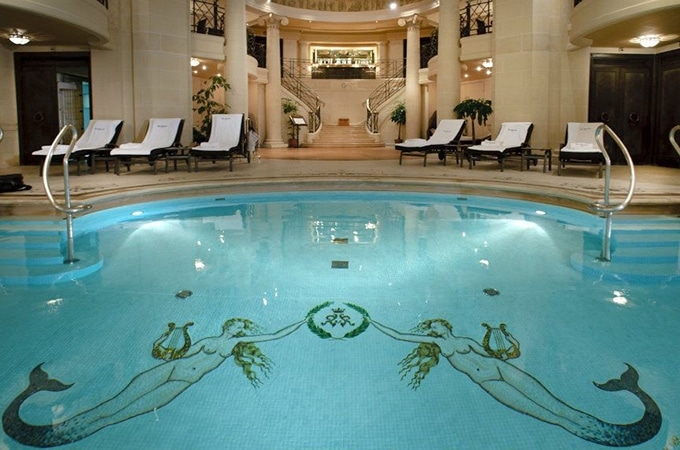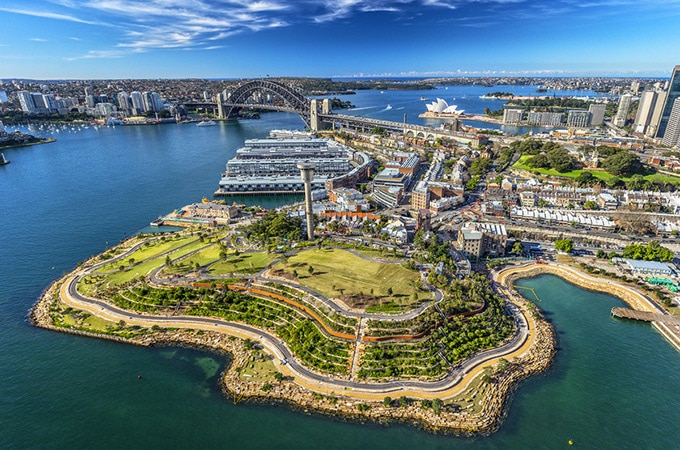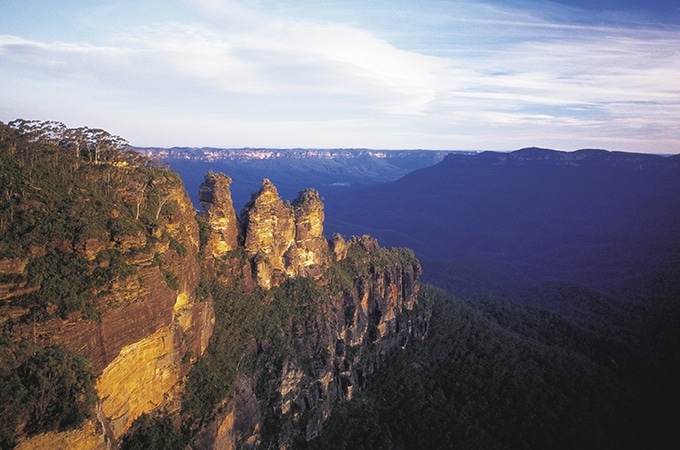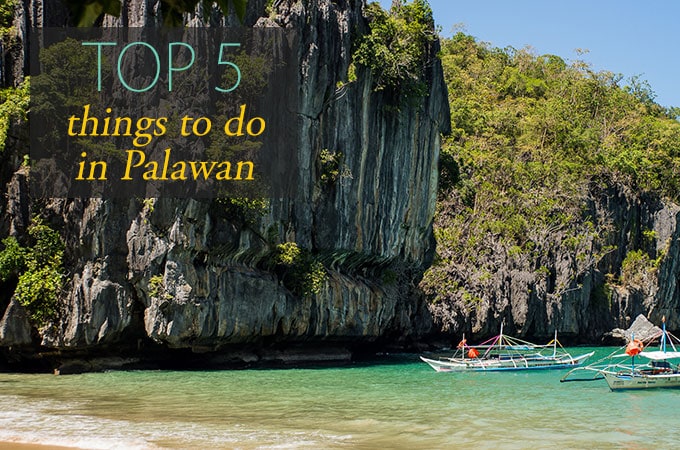Australia, the Land Down Under, is known for its breathtaking natural beauty and unique cultural heritage. But, although most of us think of iconic landmarks such as the Eiffel Tower or the Great Pyramid of Giza when it comes to travel bucket lists, many forget that Australia has numerous iconic and totally unique landmarks. That’s right, there’s more to Australia than just glorious beaches and incredible wildlife (not to mention friendly locals)! Be sure to put these 31 iconic Australian landmarks that showcase the country’s diverse landscapes and rich history on your Aussie travel itinerary!
MAN-MADE AUSTRALIAN LANDMARKS
Sydney Opera House
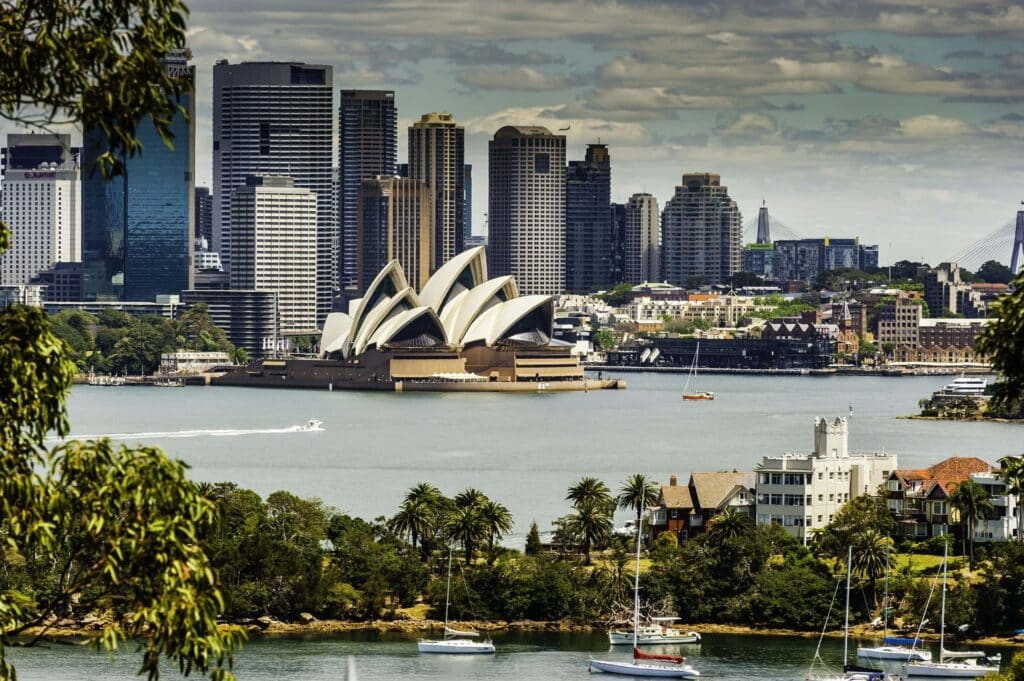
We’ll admit we are starting with an obvious one. Still, this iconic architectural marvel, designed by Jørn Utzon, is, without a doubt, a must-visit destination in Australia, and no trip to the country would be complete without experiencing its grandeur.
Gracing Sydney Harbour, the Sydney Opera House is one of Australia’s most recognisable landmarks. Renowned for its distinctive sail-like structure, it is an iconic architectural marvel.
Contrary to its name, the Sydney Opera House actually houses multiple performance venues. Each year, over one million people attend shows here, including performances by the Sydney Theater Company, the Sydney Symphony Orchestra, and Opera Sydney.
Visitors can tour the Opera House during the day or check the online schedule for upcoming performances. It is recommended to book tickets in advance.
For a different perspective, one can enjoy views of the Opera House during a sunset dinner cruise on Sydney Harbour.
Sydney Harbour Bridge
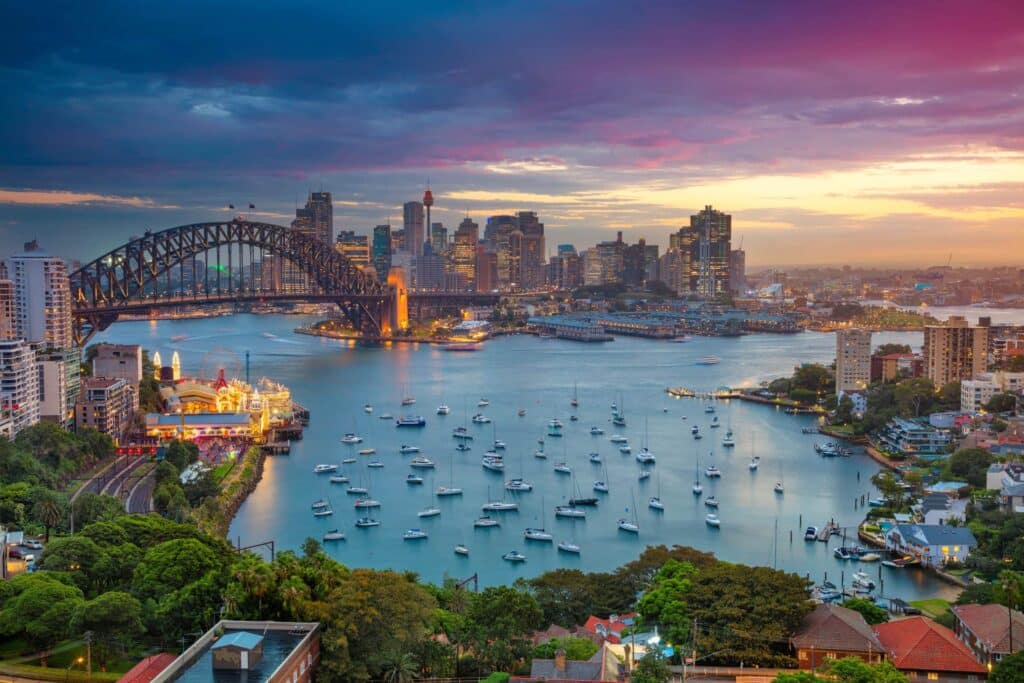
The Sydney Harbour Bridge, also known as the “Coathanger,” is an iconic steel arch bridge that is a symbol of Sydney that opened in 1932. It can be seen from many vantage points around the city and offers breathtaking views of the city and harbour.
While there are various ways to enjoy the bridge, one of the best experiences is The Bridgeclimb, which gives visitors a unique and immersive Sydney Harbour Bridge experience. Walking across the bridge independently is also an option, although the views may be obstructed along the way.
On every New Year’s Eve, an impressive fireworks show occurs on the bridge. This is one of the most exciting nights of the year, and a dedicated website is available to help you plan your experience, including the best spots to view the display.
Melbourne Cricket Ground (MCG), Victoria
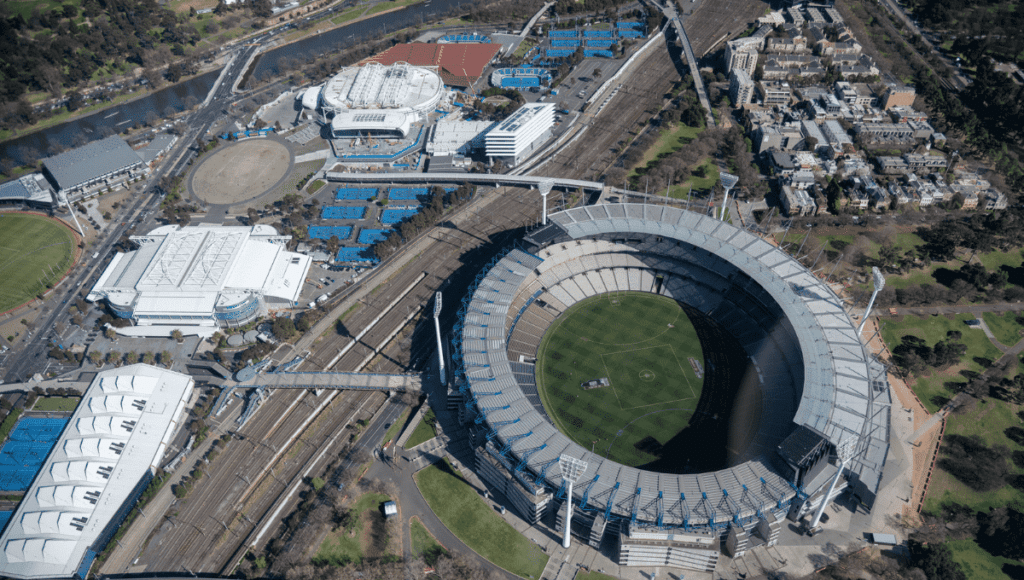
The “G” is Australia’s most prominent sports stadium and a sacred site for cricket enthusiasts. The Melbourne Cricket Ground (MCG) is not just a sports venue but also the heart of Melbourne’s sporting culture.
With a capacity of around 100,000, it is one of the largest stadiums in Australia.
The MCG has a rich history, dating back to 1877, when it hosted the first official Test match between England and Australia.
It is located in Melbourne’s Yarra Park and easily accessible by foot, train, or car. Whether taking a tour or attending an event, the MCG offers a premier entertainment experience for sports enthusiasts and is a must-see landmark when visiting Melbourne.
Royal Botanic Garden, Sydney
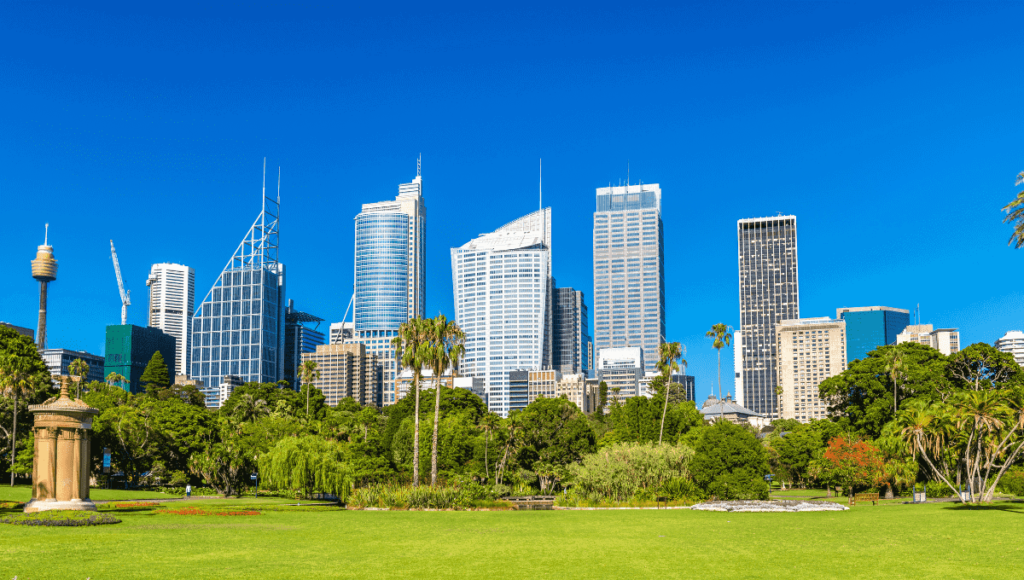
Located on the eastern side of Sydney’s bustling Central Business District, the Royal Botanic Garden offers a serene escape from the city.
With a stunning array of vibrant plant species, visitors can immerse themselves in the beauty of nature while enjoying a peaceful atmosphere. The gardens are open until late evening during warmer months, allowing ample time to explore and relax.
Access to the gardens is convenient, with the nearest train station, Martin Place, just a short walk away.
Related: A Romantic Short Break in Sydney – What to Do & See
Port Arthur Historic Site, Tasmania
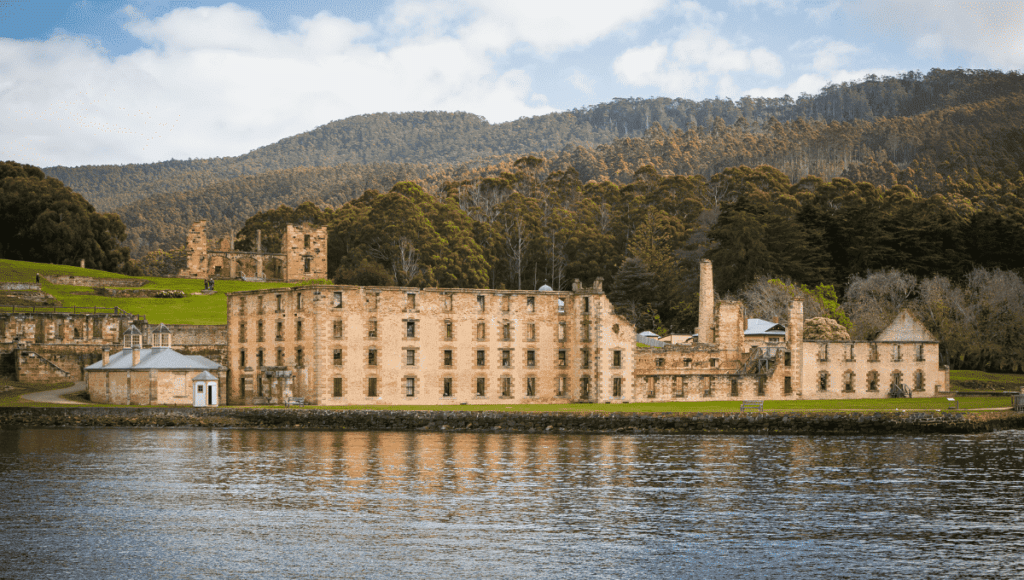
Port Arthur, located in southern Tasmania and just over an hour’s driving time from Hobart, is a village and historic site once a 19th-century penal settlement. Today, it stands as an open-air museum, preserving the ruins of the past.
The site includes the massive penitentiary, where convicts were held, and the remains of the Convict Church, constructed by inmates.
One notable feature of Port Arthur is the Separate Prison building, which housed solitary confinement cells for mental punishment instead of physical floggings.
This haunting location offers a glimpse into Australia’s convict past and has been recognised as a UNESCO World Heritage Site.
Related: You’ll Love This 14 Day Tasmania Itinerary!
Queen Victoria Building, Sydney
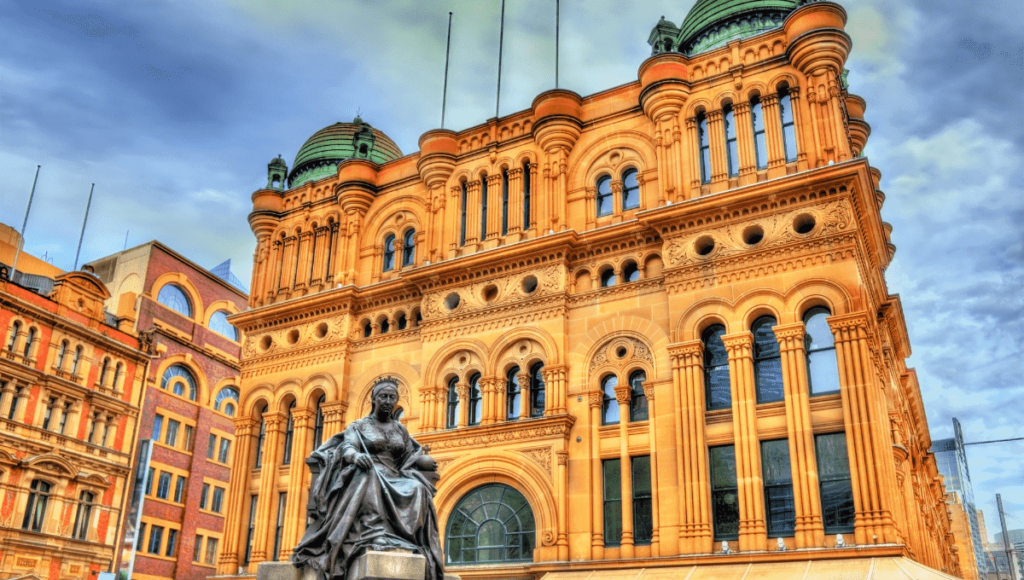
The Queen Victoria Building (QVB) has a fascinating history dating back to its opening in 1898. Originally designed by George McRae, it replaced the original Sydney Markets. The QVB’s intricate Romanesque architecture was carefully planned to provide work for out-of-work stonemasons, plasterers, and stained glass window artists. The building was named in honour of the monarch’s Diamond Jubilee. Today, it remains a testament to the skilled craftsmanship of its builders and an iconic landmark of Sydney.
During the 1930s, the building underwent drastic Art Deco ‘remodelling’ to accommodate the primary occupant, the Sydney City Council.
However, from 1959 to 1971, the QVB faced near-demolition. A massive restoration project was approved, and the fully restored QVB reopened her doors to Sydneysiders and visitors alike in 1986. A significant refurbishment in 2009 further restored the building.
Today, the QVB stands in all her glory, a testament to the original vision for the building and the superb craftsmanship of the artisans who put it back together.
A time capsule containing a letter from Queen Elizabeth II to the citizens of Sydney is set to be opened by the Lord Mayor of Sydney in 2085.
The Big Banana, NSW
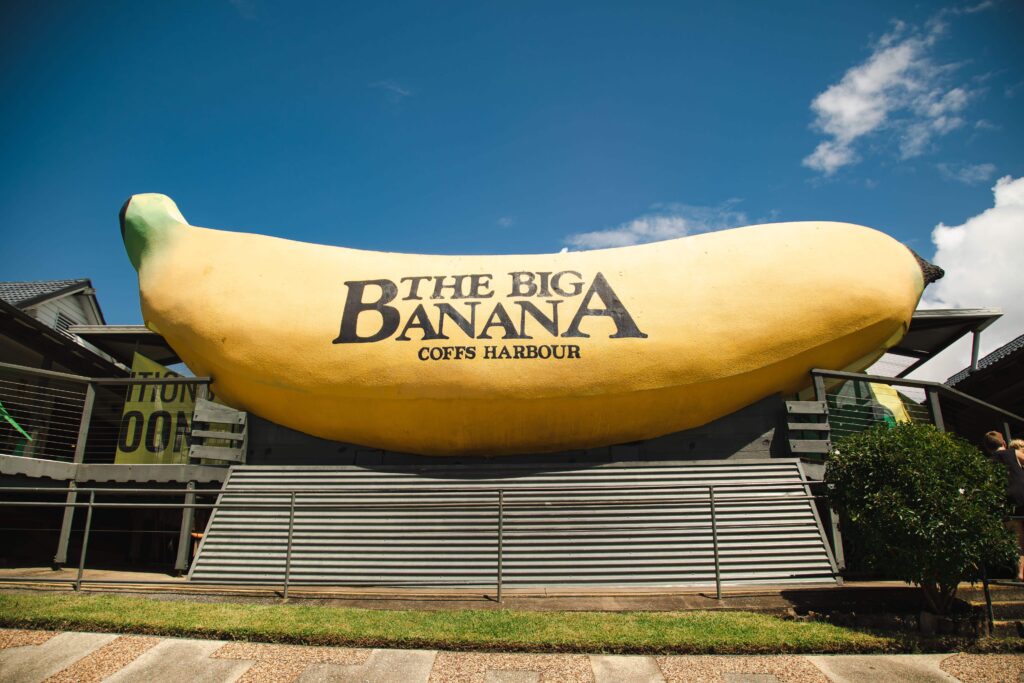
The Big Banana in Coffs Harbour, Australia, is a famous landmark that has captivated travellers since the 1960s. Many Australian adults have fond memories of stopping there on a road trip.
Engineer Alan Chapman designed this 13-metre-long fruit, drawing inspiration from the most shapely banana.
Initially, the site only had a plantation with smaller banana trees, but it has become a popular tourist attraction. Visitors can now enjoy a milk bar serving delicious banana shakes and exciting activities like a toboggan track, water park, laser-tag arena, and mini-golf course.
Related: Thinking of an Aussie Road Trip? Check Out This Sydney to Byron Bay Road Trip Itinerary!
Fremantle Prison, WA
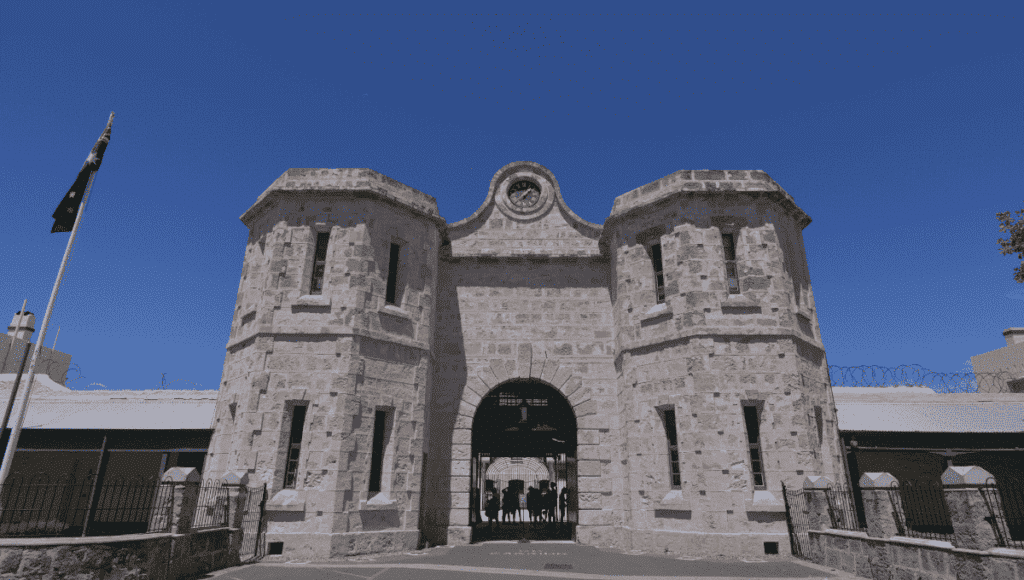
Perth in Western Australia is home to a must-see UNESCO World Heritage site, the Fremantle Prison, originally built by convicts in the 1850s.
The prison served as a maximum security gaol until it was decommissioned, and today stands as the largest convict-built structure in Australia.
It is also recognised as the best-preserved convict establishment in the southern hemisphere and the only building designated as a World Heritage site in Western Australia.
Visitors can take guided tours of the prison, including the Torchlight and Prison Art tours, to experience its rich history and immersive visitor experiences. The Gatehouse complex houses museum displays, while the Prison Gallery hosts themed exhibitions for visitors to enjoy. The True Crime tour provides insights into the daily lives of convicts and prisoners.
Related Article: 27 Amazing Things You Can Only Do & See in Australia
The Australian War Memorial, Canberra
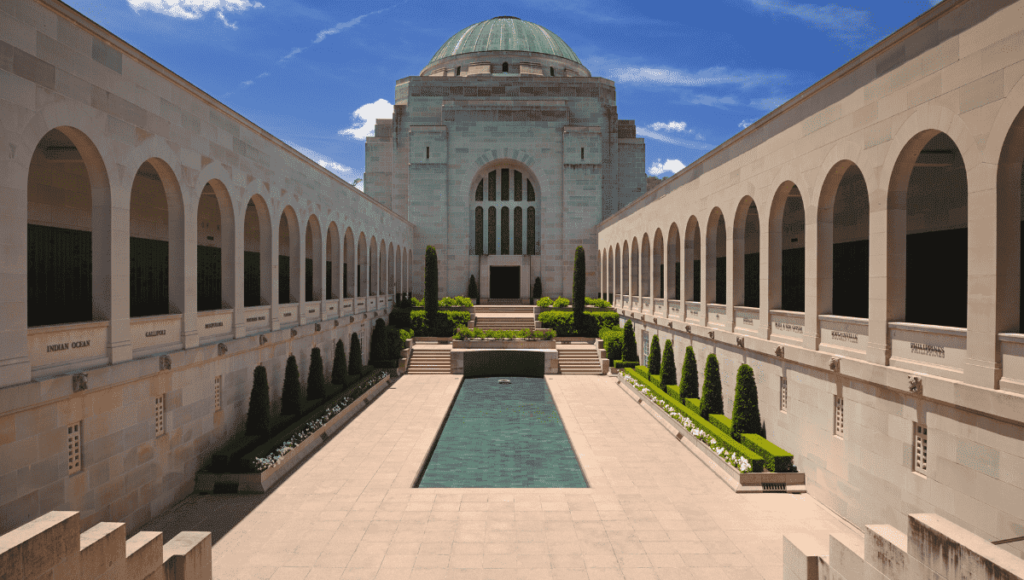
Australia’s military history and fallen soldiers are remembered through the Australian War Memorial in Canberra.
It serves as the national memorial to honour the members of its armed forces and supporting organisations who have participated in wars involving the Commonwealth of Australia and combines a world-class museum, a shrine, and an extensive archive to tell the stories of those who have served and continue to serve the nation in war, conflict, and operations.
Visitors are required to obtain a free-timed ticket in advance to enter the Memorial Galleries and attend the Last Post Ceremony.
Parliament House, Canberra
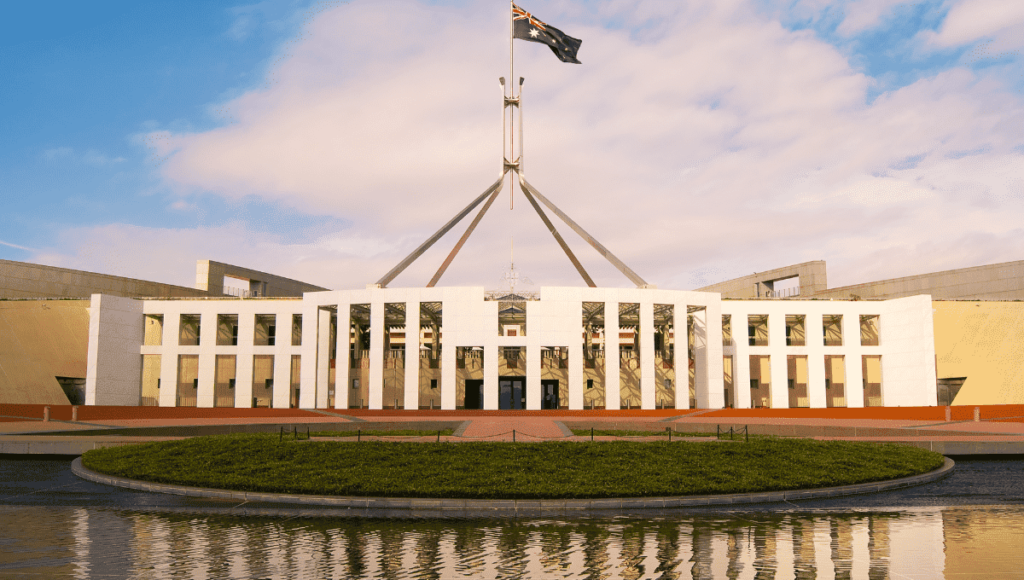
Australian Parliament House, located in Canberra, is a political institution, a significant symbol of Australian democracy and a popular tourist destination. The building is an architectural wonder chosen from a global competition with over 320 entries. Its design promotes public access and engagement while considering the unique Australian climate, landscape, vegetation, and lighting conditions.
The Parliament House forecourt acknowledges Australia’s ancient heritage and features an impressive 196-square-meter mosaic created by Aboriginal artist Michael Nelson Jagamara.
Visitors can explore a remarkable art collection inside the building, including the magnificent Great Hall Tapestry designed by renowned Australian artist Arthur Boyd. This tapestry, a true masterpiece, took a team of fourteen weavers over two years to complete.
One of the highlights of a visit to the Australian Parliament House is the opportunity to witness Question Time, where visitors can observe democracy in action. This unique experience allows visitors to see firsthand how the Australian government operates and engages in debates and discussions.
HMAS Sydney II Memorial, WA
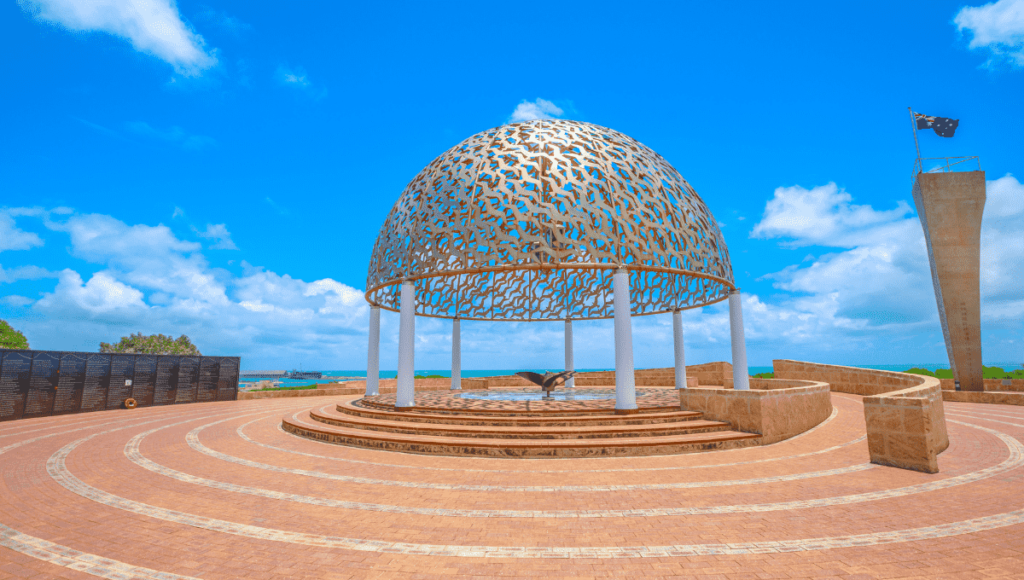
Located in Geraldton, this national memorial commemorates the loss of the HMAS Sydney II and its 645 crew, who died during a naval battle in World War II on November 19, 1941.
It features a beautifully crafted silver dome adorned with 645 seagulls, each representing a sailor. The central part of the monument consists of a large silver hollow dome supported by seven pillars, symbolising the seven states and territories of Australia. The memorial wall bears the names of all 645 sailors.
Adjacent to the silver dome is a towering monument shaped like a ship’s bow, accompanied by a bronze statue of a woman patiently awaiting the return of her beloved. It is a genuinely poignant landmark that Australian and overseas travellers should put on their Australian itinerary.
The Big Pineapple, Queensland

The Big Pineapple, located in Woombye on the Sunshine Coast, was once a famous landmark that even caught the attention of Prince Charles and Lady Diana during their 1983 Royal tour.
Initially opened in 1971 on the Sunshine Plantation, the 16-metre tall fibreglass pineapple was a significant tourist attraction back in the day, drawing over 1 million visitors annually at its peak. Efforts are currently underway to restore this heritage-listed site to its former glory.
NATURAL AUSTRALIAN LANDMARKS
Wave Rock, WA
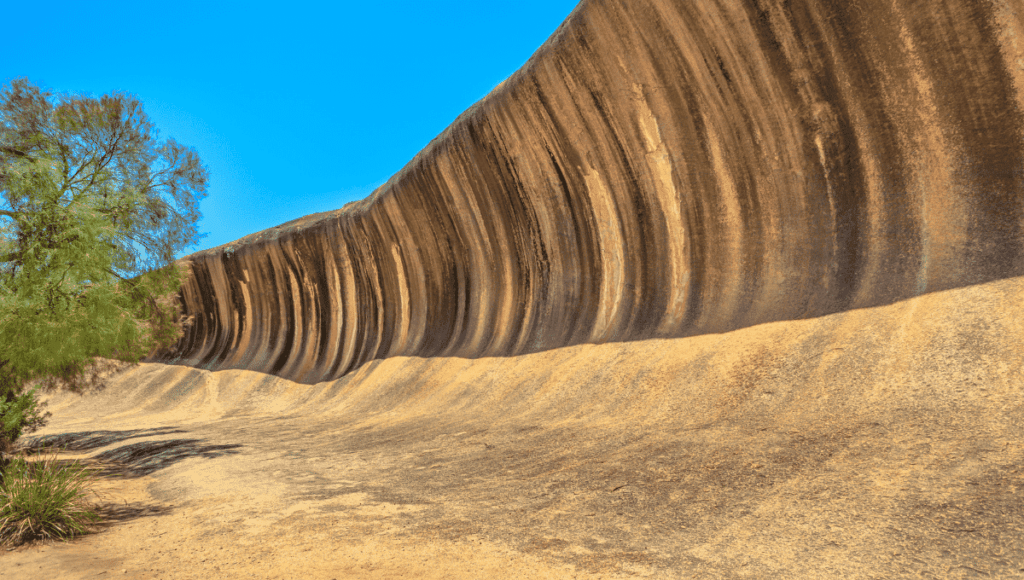
Wave Rock, one of Australia’s most iconic natural landmarks, is located near the town of Hyden in the Wheatbelt region of Western Australia.
This impressive rock formation stands 15 metres tall and over 100 metres long, resembling a massive wave of colourful granite.
Wave Rock is a geological wonder dating back 2700 million years. It holds cultural significance for the Indigenous Australians who have inhabited the area for thousands of years. Nearby, you can explore Mulka’s Cave, which features ancient rock paintings.
To reach Wave Rock, you can drive from Perth along the Brookton Highway and various other roads, which takes approximately four hours. Alternatively, you can fly to Wave Rock Airport, with a flight time of just over an hour.
The Twelve Apostles, Victoria
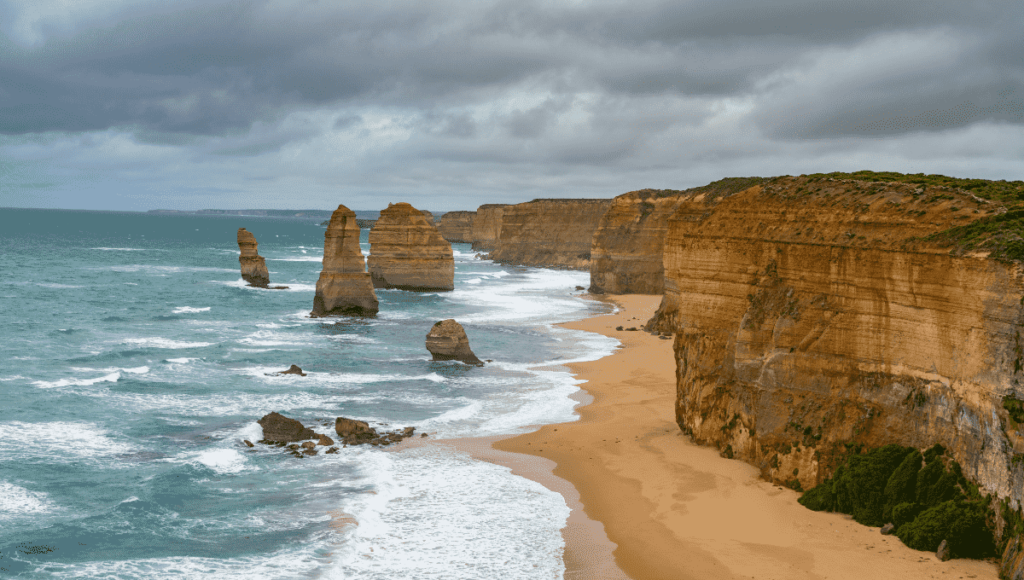
The Great Ocean Road in Australia is known for its breathtaking scenery, and one of its main attractions is the 12 Apostles. These limestone formations are 15 to 20 million years old and can be seen jutting out from the Southern Ocean.
These rock stacks formed millions of years ago through erosion caused by the stormy Southern Ocean and strong winds. Over time, the softer limestone cliffs developed caves, which eventually collapsed to create the iconic 12 Apostles.
To reach the 12 Apostles, one must travel approximately 275 kilometres west of Melbourne, about a four-hour drive along the Great Ocean Road.
Related: 7 Wonders of the Natural World Every Travel Lover Should See
The Great Ocean Road, Victoria
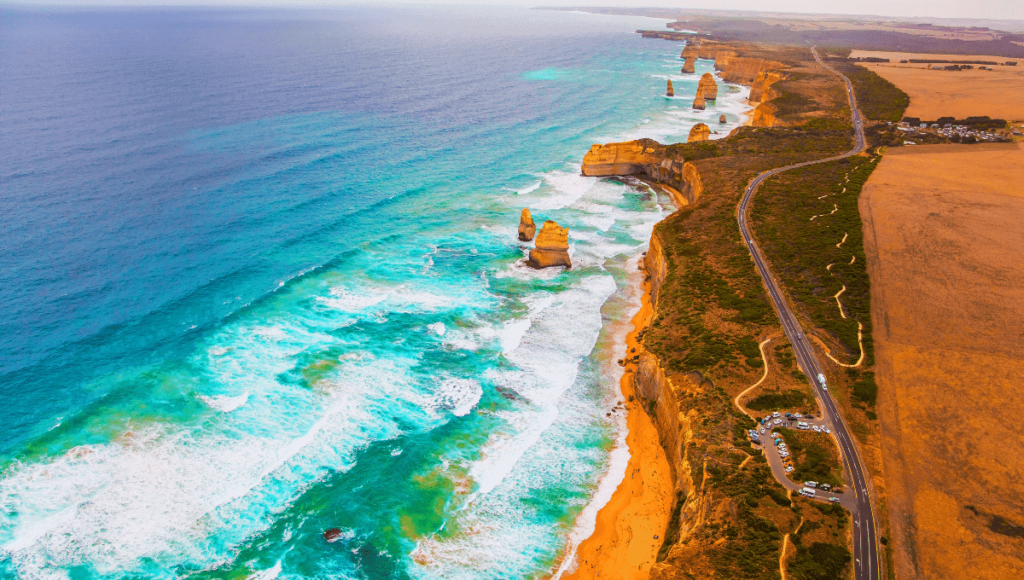
The Great Ocean Road is a breathtaking coastal route that spans 243 kilometres along the southeastern coast of Australia, from Torquay to Warrnambool.
It is renowned as one of the world’s most scenic drives and attracts local and international tourists.
Along this iconic road, visitors can explore a variety of top attractions, including Bells Beach, the Memorial Arch at Eastern View, Teddys Lookout, Kennett River Koala Walk, Aireys Inlet Lighthouse, Erskine Falls, Cape Otway Cape Station, the Californian Redwoods, Mariners Lookout, the Otway Treetop Walk, Gibson Steps, the 12 Apostles (which are so incredible they have their place on this list of Aussie Landmarks!), Loch Ard Gorge, and London Bridge.
With its stunning coastal villages, beautiful beaches, majestic waterfalls, and lush rainforests, the Great Ocean Road offers a truly unforgettable experience for travellers and is a definite Australian landmark.
K’gari (formerly known as Fraser Island), Queensland
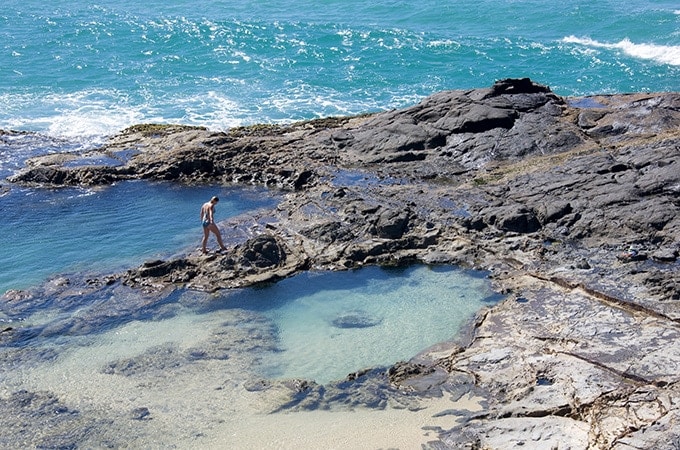
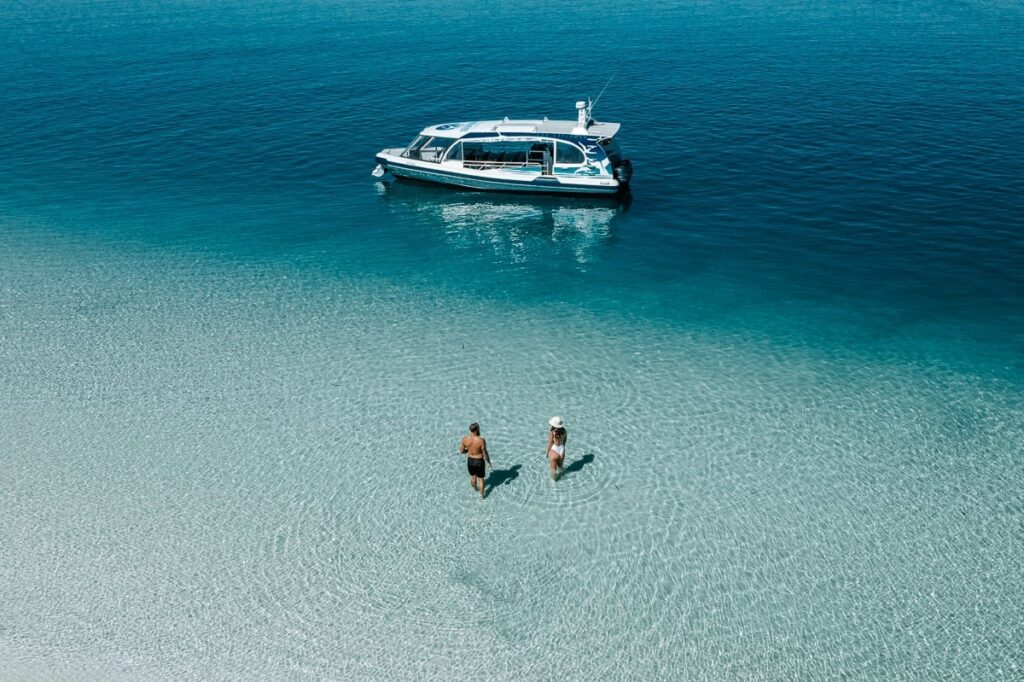
K’gari, previously known as Fraser Island, is a breathtaking destination in Queensland that promises a unique and adventurous experience. With its 120-km-long beach, it holds the title for one of the longest beaches in the world.
K’gari can only be accessed by 4WD vehicles, adding an extra level of adventure to your trip. If you’re looking to explore this beautiful island, you can rent a four-wheel drive truck in Noosa and set off on an unforgettable journey. As you drive along the sandy shores, you’ll come across breathtaking sand dunes, mesmerising tidal pools, and even discover remnants of shipwrecks.
Other options available to you to get to K’gari include taking a ferry from Hervey Bay or Rainbow Beach to reach the island. Qantas also provides flights from Brisbane to Hervey Bay. The ferry ride from Hervey Bay to the island is a quick 40 minutes.
The island’s natural beauty is well established, created over hundreds of thousands of years, with ancient sand dunes, long stretches of beautiful beaches, crystal clear freshwater lakes and creeks (did someone say Lake McKenzie?), lush rainforests, and an abundance of native flora and fauna to explore.
The island offers camping, cabins, and resort-style accommodation options that suit all types of holiday makers. Eco-adventures on the island include cruises discovering the untouched beauty of the remote western side, a 90km Great Walk adventure, and guided or self-drive tours.
Related: Romantic Experiences on K’Gari
The Bungle Bungles, WA
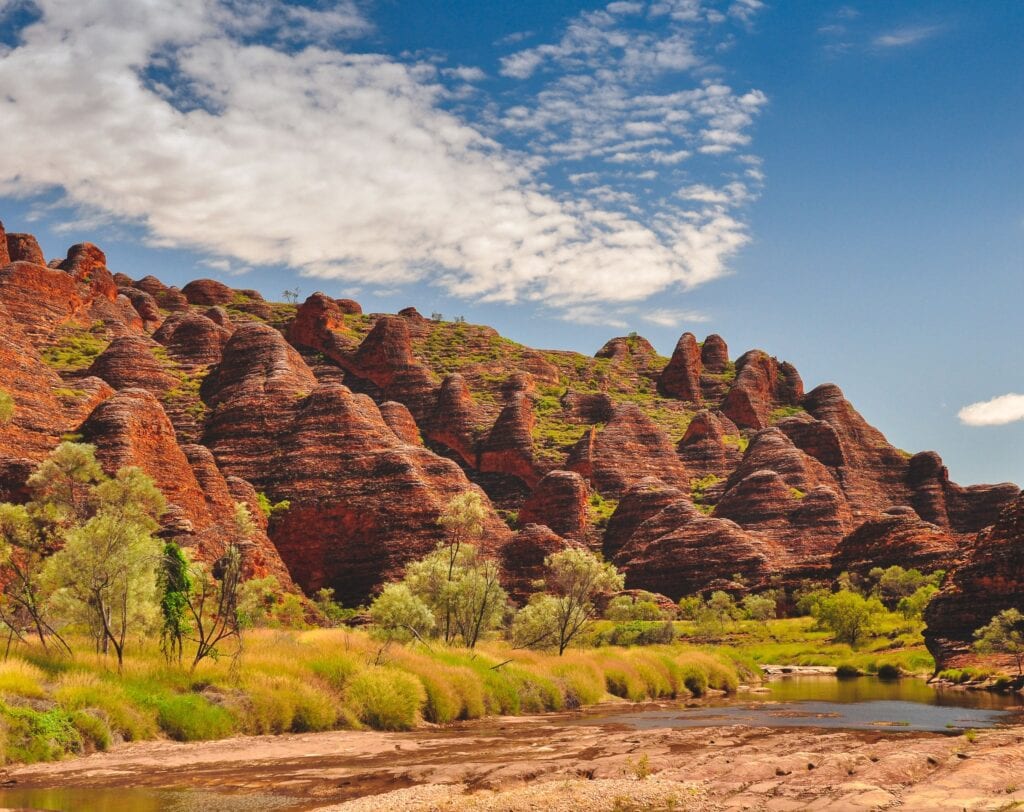
Located in Purnululu National Park in Western Australia, the Bungle Bungle Range is a stunning natural wonder that has gained international recognition.
The name “Purnululu” comes from the Gija people, the Aboriginal inhabitants of the region. It means “fretting sands” which refers to the unique sandstone formations known as the Bungle Bungle.
These formations rise 300 meters above the surrounding grassy plains and feature striking orange and black stripes. They were formed over the course of 20 million years through erosion caused by water. From a distance, they resemble pyramids or the turrets of ancient castles, making them a truly captivating sight.
Incredibley, it wasn’t until 1983 that the Bungle Bungles were discovered by a documentary crew filming “Wonders of WA.” Access to the Bungle Bungle can be achieved by four-wheel drive, helicopter, or joining an organised tour.
Kangaroo Island, SA
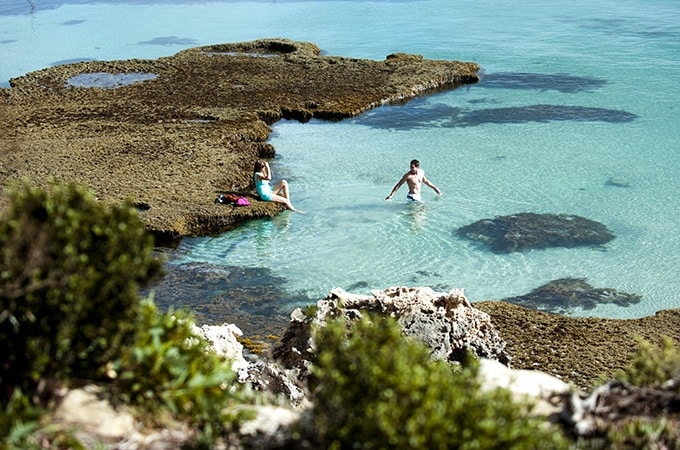
Located off the coast of South Australia, Kangaroo Island is a stunning destination that can be easily accessed by air or ferry. With its breathtaking coastline, mesmerising landscapes, and abundant wildlife, Kangaroo Island offers a unique and authentic nature experience.
Just a short distance from Adelaide, this island paradise allows visitors to explore postcard-perfect beaches and ancient landscapes while encountering iconic Australian animals.
The Pinnacles, WA
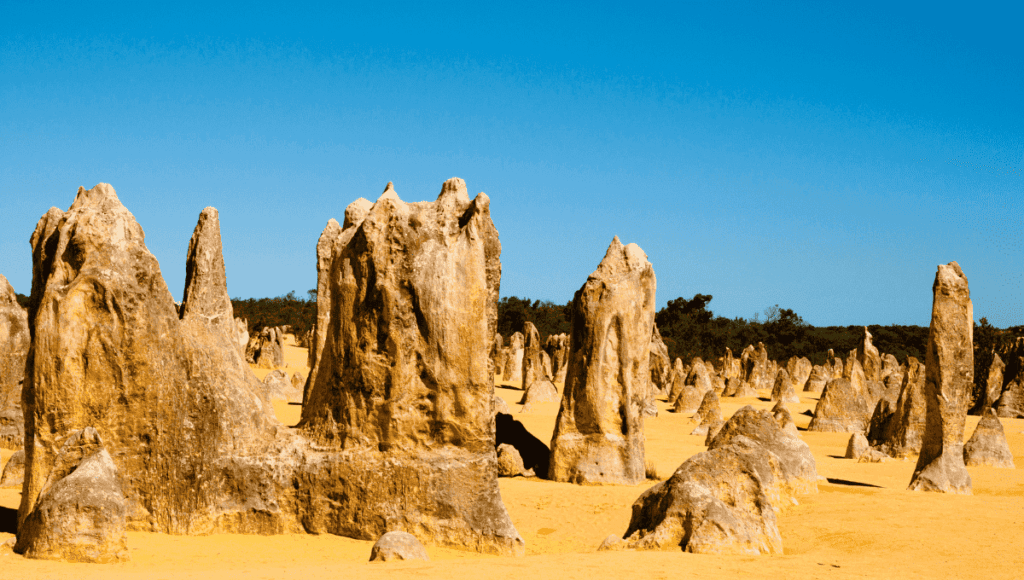
The Pinnacles in Nambung National Park are a popular tourist attraction in Western Australia. These unique limestone structures rise out of the sandy landscape and draw in hundreds of thousands of visitors each year to see what can only be described as an otherworldy landscape.
They were formed over 25,000 years ago when the ocean receded, leaving behind deposits of sea shells. Over time, the coastal winds removed the surrounding sand, exposing the pillars to the elements. Some of these pillars stand as high as four metres.
The Pinnacles are considered one of Australia’s most intriguing and distinctive landscapes and serve as a gateway to the stunning Coral Coast region.
Kakadu National Park, Northern Territory
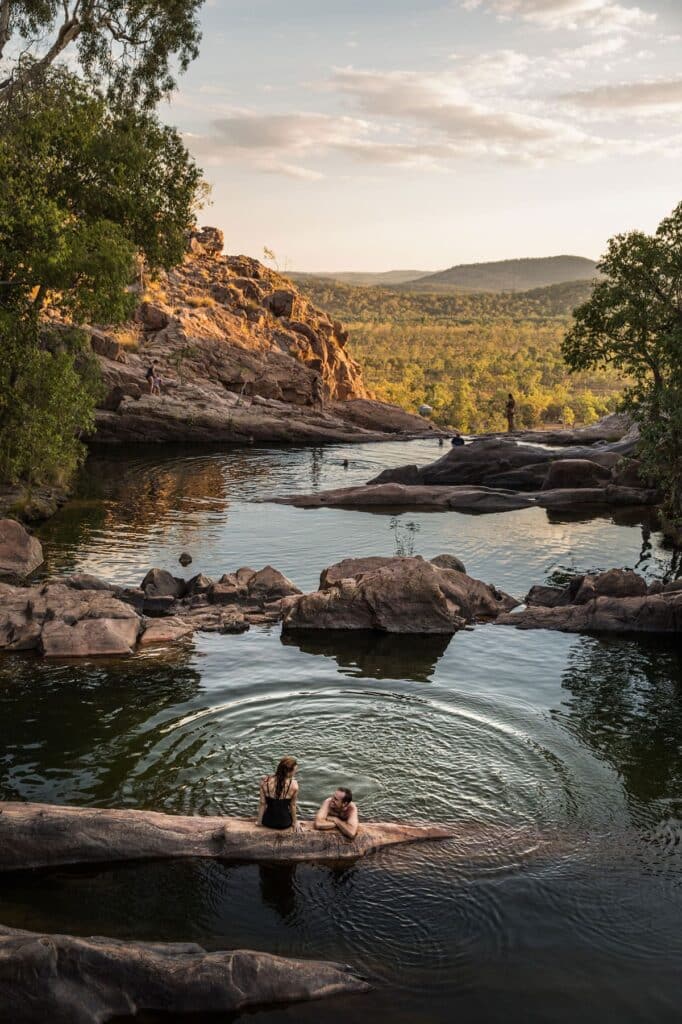
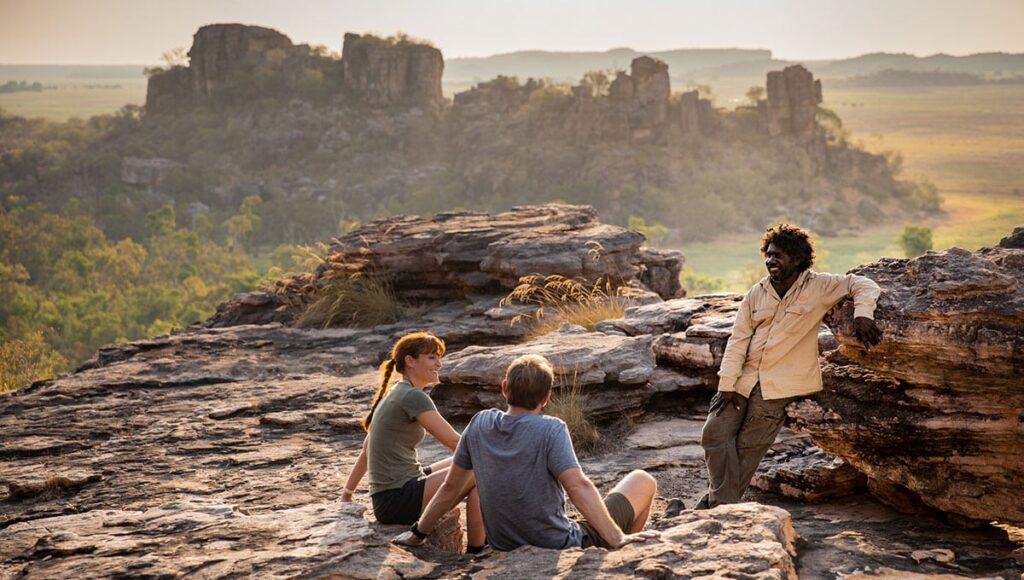
Kakadu National Park is a UNESCO World Heritage site in the Northern Territory of Australia. It is renowned for its rich Aboriginal history, stunning rock art, and diverse wildlife.
The park spans an area nearly one-third the size of Tasmania. It includes a unique blend of ecosystems such as wetlands, floodplains, and plateaux, which provide a habitat for numerous rare and endemic species.
The Aboriginal people have continuously inhabited Kakadu for over 40,000 years, making it an important archaeological and ethnological reserve. It is also a living testament to their skills and way of life.
When visiting Kakadu, purchasing a National Parks Pass beforehand is essential.
Bondi Beach, NSW
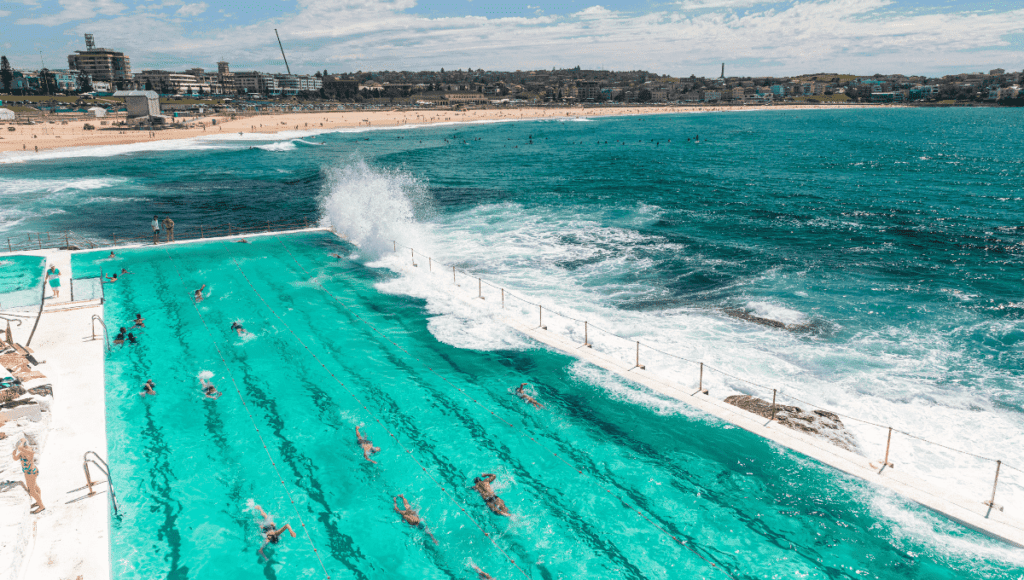
Bondi Beach is a renowned tourist destination in Sydney, famous for its stunning beauty and vibrant atmosphere. The beach boasts expansive white sand and crystal-clear waters, making it a haven for beach lovers and surf enthusiasts.
Visitors can relax on the beach, watch skilled surfers ride the waves, or take a refreshing swim. The street behind the beach has numerous cafes where you can enjoy a delicious meal while enjoying the refreshing sea breeze.
The Bondi to Coogee coastal walk is a must if you’re searching for a picturesque adventure. This six km walk takes approximately two to three hours, depending on your pace, and allows you to take in the stunning views of the cliffs, charming coves and picturesque parks.
Uluru, Northern Territory
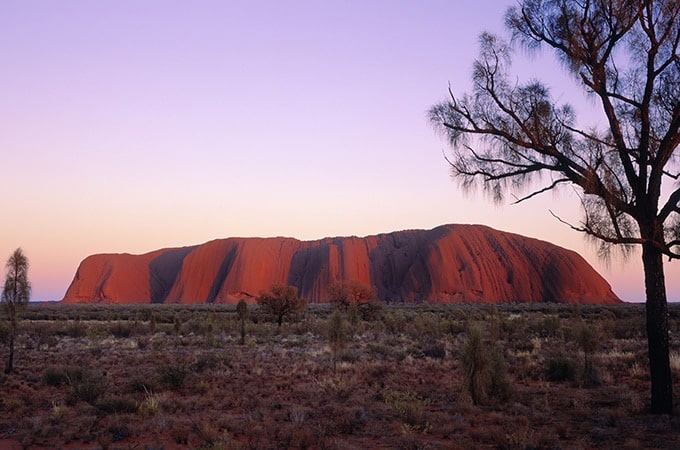
Uluru, previously known as Ayers Rock, is a sacred site for the Indigenous Anangu people and a UNESCO World Heritage site over 550 million years old. Uluru is a place name with no specific meaning.
Located in the heart of the Australian Outback, Uluru rises 348m from the desert floor and is a stunning landmark that dominates the landscape.
Despite its remote location, thousands of tourists visit Uluru each year to witness its beauty and experience its spiritual energy. As one of Central Australia’s gems, Uluru stands out as an iconic Australian landmark.
Related: Adventure & Luxury in Uluru
Great Barrier Reef, Queensland
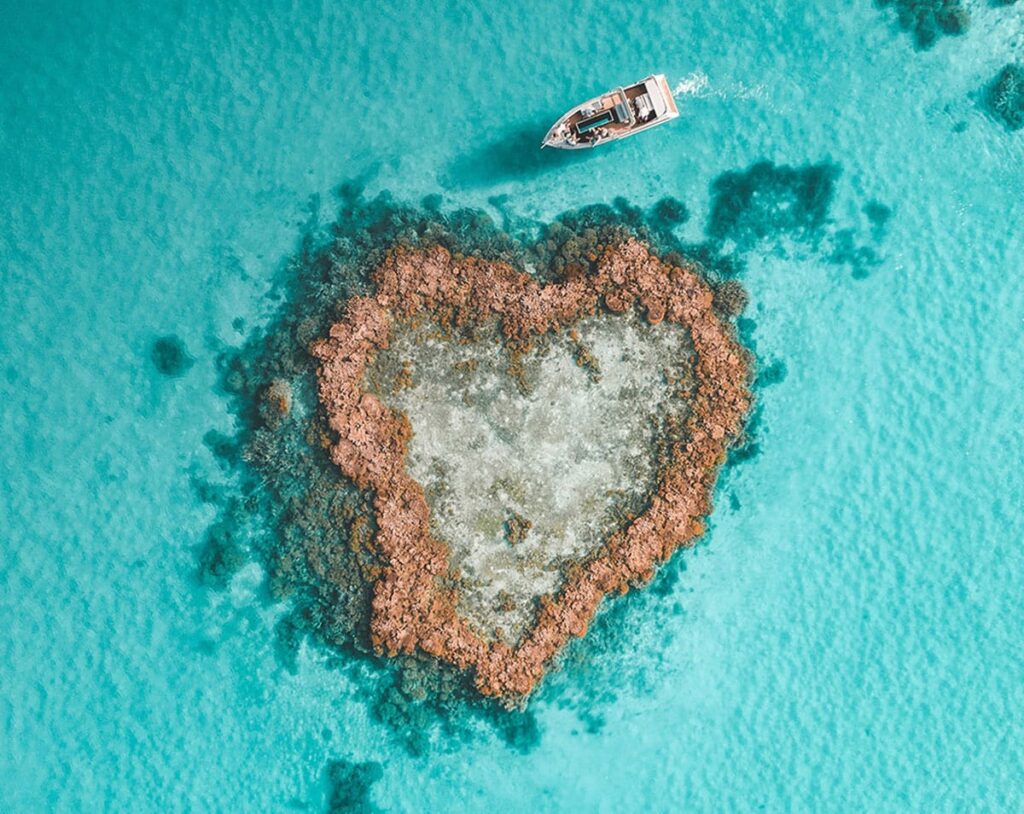
The Great Barrier Reef, located along Australia’s east coast in the Coral Sea, is a world-renowned natural wonder stretching over 2,300 kilometres. It is the largest living structure on Earth and can even be seen from space.
The reef is home to diverse marine life, including over 1,600 fish species, dolphins, sharks, turtles, giant clams, rays, and corals.
Unfortunately, the Great Barrier Reef faces numerous challenges due to climate change, such as coral bleaching and crown-of-thorns starfish outbreaks. The Australian Government Great Barrier Reef Marine Park Authority regularly provides updates on the reef’s health, and there are documentaries like “Chasing Coral” on Netflix that offer further insight into its condition.
Despite these threats, people still have opportunities to explore and experience the Great Barrier Reef. Numerous dive sites are suitable for beginners and experienced divers, and options for liveaboard trips, snorkelling and diving day trips, and helicopter or glass bottom boat tours.
One notable spot within the reef is Heart Reef, often sought after for its romantic appeal (it would be a great place to propose!) or as a navigational landmark.
If you’re looking for travel inspiration, consider spending a week in the beautiful Whitsundays! Our itinerary can provide some ideas.
Carnarvon Gorge, Queensland
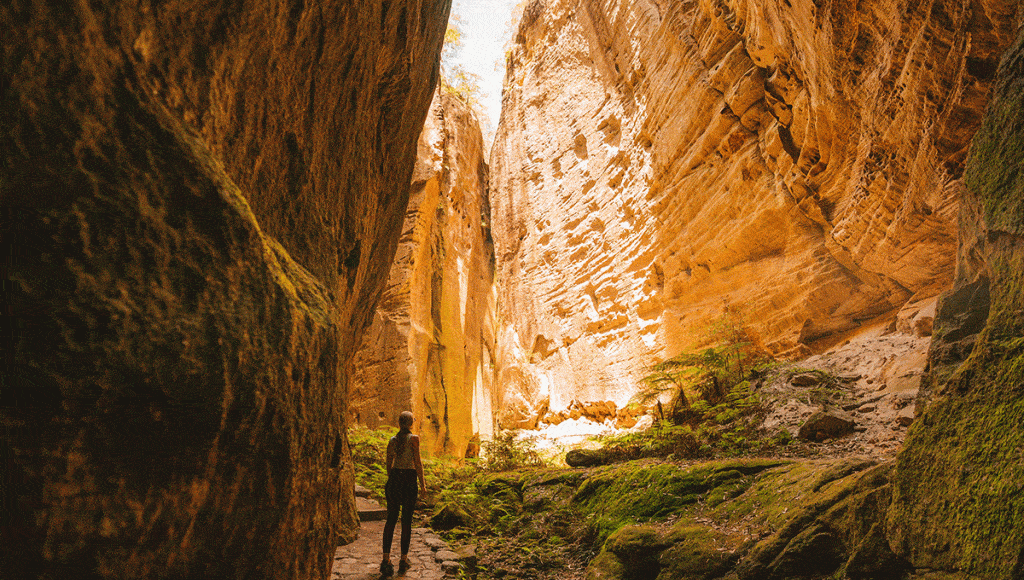
Carnarvon Gorge National Park is a breathtaking natural wonder in Queensland’s sandstone country. This tropical oasis may not feature heavily on overseas Australian travel lists, but take it from us locals – it is a true Australian landmark, with its deep gorges, towering cliffs, and stunning aboriginal rock art.
Carnarvon Gorge is a unique and contrasting experience compared to other national parks in Australia. The park is also of great historical and cultural significance, with sacred sites and Aboriginal art showcasing the rich heritage of the Bidjara and Karingbal people.
Carnarvon Gorge is home to unique plant species such as the Carnarvon fan palms and Sydney blue gums. It is also home to a diverse range of wildlife, including gliders, kangaroos, wallabies, turtles, and over 170 species of birds. This tropical oasis is located in the heart of the Outback and is a true marvel of nature.
Lake Hillier, WA
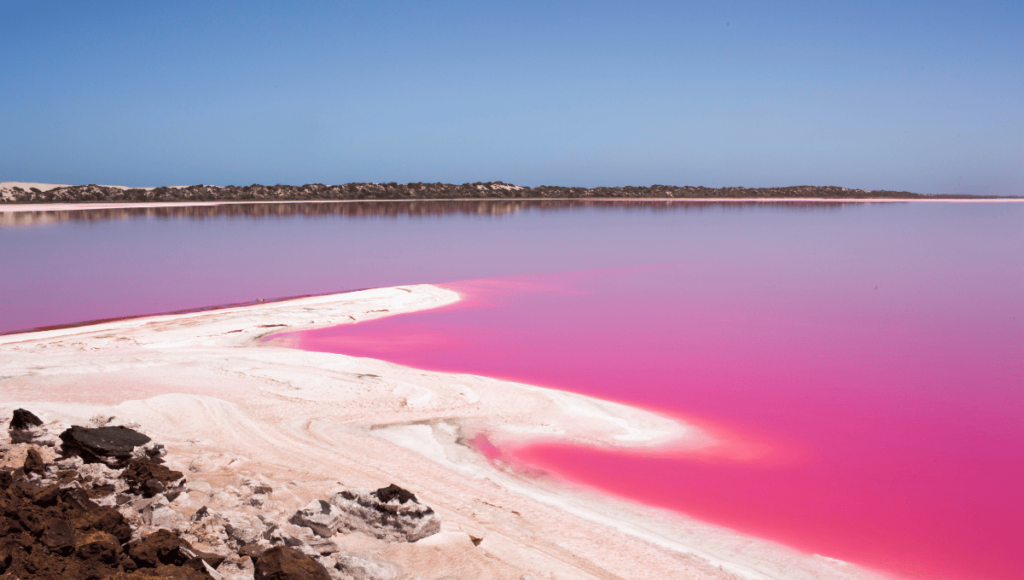
Lake Hillier, located on Middle Island in the Recherche Archipelago of Western Australia, is a stunning natural wonder.
Measuring 600 metres wide and shaped like a footprint, Lake Hillier creates a striking contrast against the untouched islands of the archipelago.
The lake’s vibrant pink colour is believed to be caused by algae in the water, although there is no definitive proof.
While there are other pink lakes in Australia, Lake Hillier is the most well-known and can be viewed from scenic flights or cruises. However, it’s important to note that the pink colour of the lake is a natural phenomenon and may vary depending on biological changes in the lake.
Related article: The Most Beautiful Pink Lakes In Australia (and how to get to them) …
The Daintree Rainforest, Queensland
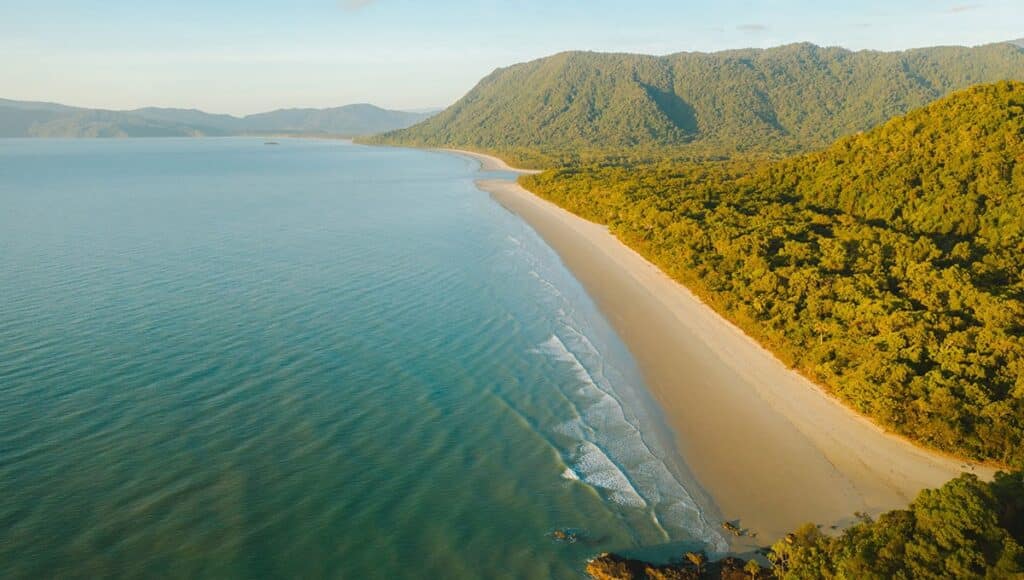
The Daintree Rainforest is located in Far North Queensland and is not only Australia’s largest continuous tropical rainforest but also one of the oldest rainforests in the world. Covering over 2600 square kilometres, it is even larger than New York’s Central Park.
The Daintree Rainforest, a UNESCO-listed natural landmark, is famous for its extraordinary plant and animal life, including the elusive cassowary. Stretching from Cooktown to the Great Dividing Range, this World Heritage site is home to ancient king ferns, towering bull kauri pines, and a diverse range of wildlife, including crocodiles.
What sets the Daintree apart from other rainforests is its intricate and unparalleled ecosystem, making it a truly one-of-a-kind destination to explore.
The Daintree Rainforest offers many activities, from hiking in Mossman Gorge to discovering secluded beaches in Cape Tribulation.
With its rich history and stunning natural beauty, the Daintree Rainforest is a must-visit destination for nature enthusiasts and those seeking to immerse themselves in the wonders of Australia’s natural landscapes.
Wineglass Bay, Tasmania
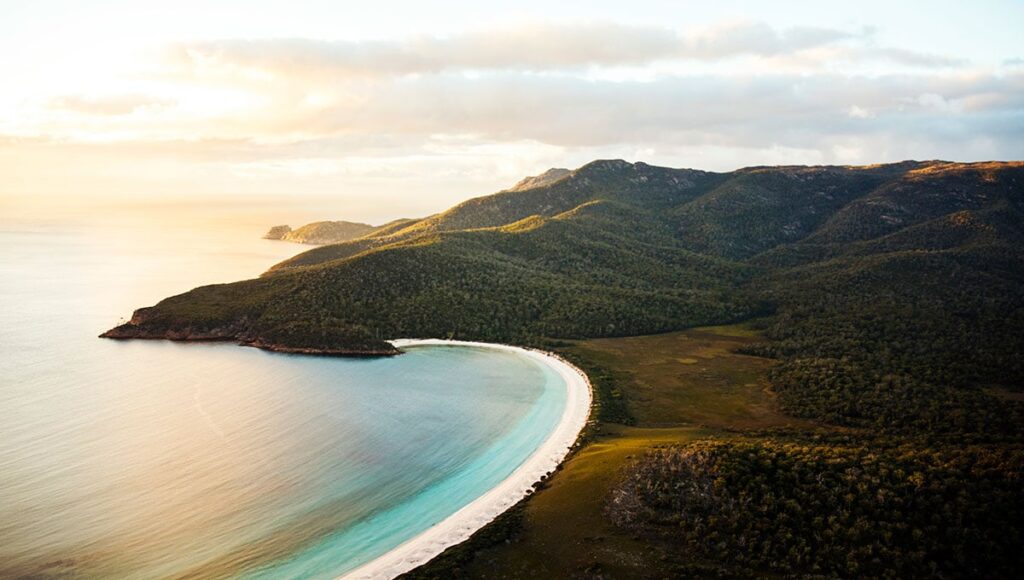
Located on Tasmania’s east coast, Wineglass Bay is a stunning beach that is part of the Freycinet Peninsula. Surrounded by the picturesque Hazards range and bordered with pink granite peaks, it offers breathtaking views and is often considered one of the world’s top ten beaches.
Accessible within a 2.5-hour drive from both Hobart and Launceston, Wineglass Bay is a must-visit destination in Tasmania and one of Australia’s most iconic destinations.
To reach Wineglass Bay, you can take a short walk from the nearby camping grounds. This involves climbing uphill through The Hazards, which leads to a rocky lookout, followed by a descent to the beach. For those who prefer longer adventures, there are options for multi-day walking tours that can last up to four days. From the entrance of Freycinet National Park, it typically takes around two hours to walk to Wineglass Bay.
Related: The Ultimate 14 Day Tasmania Itinerary
The Three Sisters, Blue Mountains NSW
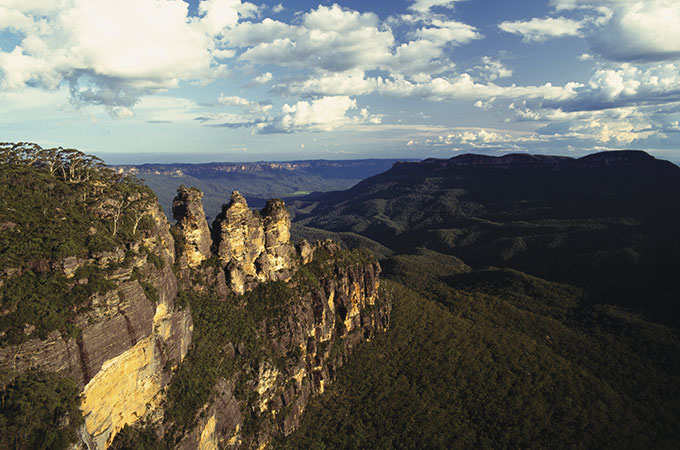
The Three Sisters, a famous Australian landmark, is located in the Blue Mountains, a UNESCO World Heritage-listed area known for its stunning natural beauty. According to Aboriginal dream-time legend, the Three Sisters were three members of the Katoomba tribe named ‘Meehni’, ‘Wimlah’, and ‘Gunnedoo’ who lived in the Jamison Valley.
This rugged range, with its sandstone plateaux, plunging gorges, and temperate eucalypt forest, attracts day-trippers from Sydney who admire its breathtaking scenery.
Shark Bay, WA
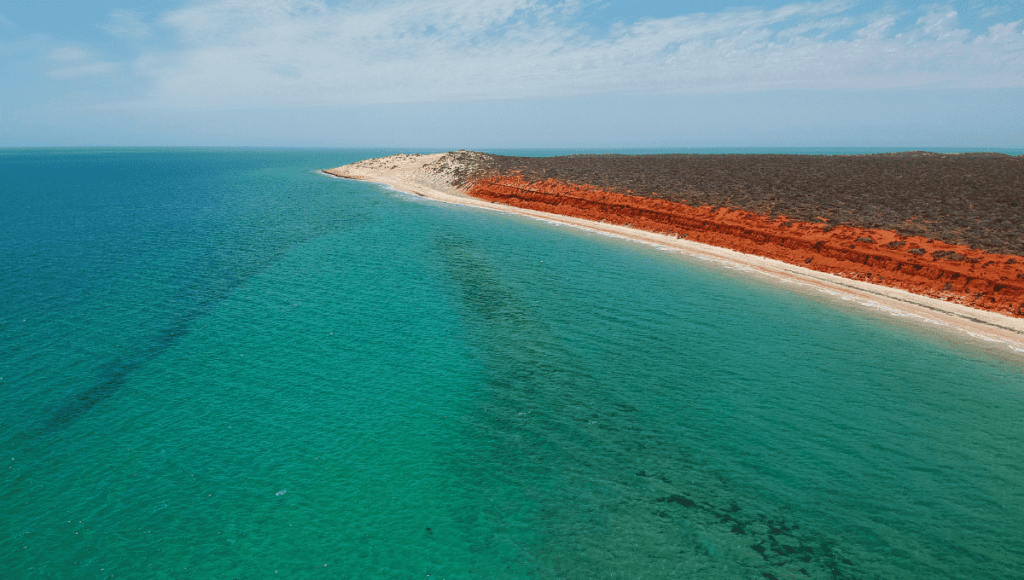
Shark Bay has been designated as a UNESCO World Heritage site in Western Australia for its exceptional marine life and stunning beaches. The place offers a remarkable unspoiled wilderness with warm weather, clear skies, and turquoise waters. While the incredible dolphin encounters are a major attraction, there is much more to explore at Shark Bay.
Take a few days to explore the area, and you will be surrounded by the oldest living fossils in the world and the opportunity to see dugongs and humpback whales.
You can stroll along a beautiful cockle shell beach or scuba dive from the westernmost tip of Australia.
Shark Bay is renowned for its unique natural features, including its vast sea-grass beds, the largest in the world, its population of dugongs (also known as sea cows), and its stromatolites. These dome-shaped deposits formed by algae are among Earth’s oldest forms of life. Additionally, Shark Bay is home to five species of endangered mammals.
The Gondwana Rainforests, Eastern Australia
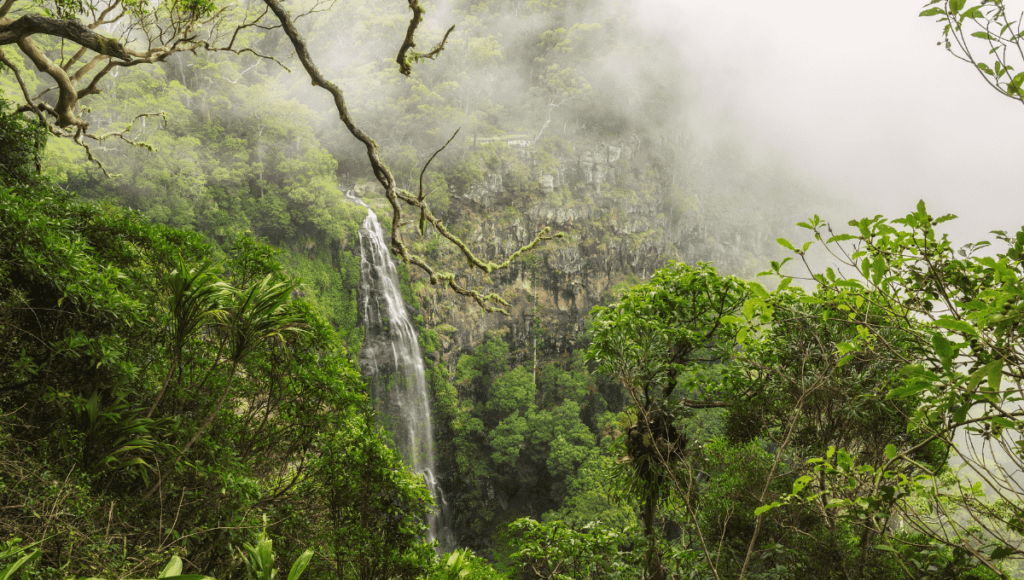
The Gondwana Rainforests are protected areas on Australia’s east coast. The region features remarkable geological formations and a diverse range of rare and endangered rainforest species.
The Gondwana Rainforest is the largest subtropical rainforest in Australia, covering over 360,000 hectares and is recognised as a world heritage area. It is a living testament to the ancient rainforests that thrived in the supercontinent of Gondwana.
The Gondwana Rainforests are a mesmerising destination for nature enthusiasts, offering a captivating experience filled with unique wildlife, ancient plants, and primitive animals. The rainforest’s allure and mystique make it an unforgettable destination for those seeking to immerse themselves in the beauty of nature.
Ningaloo Reef
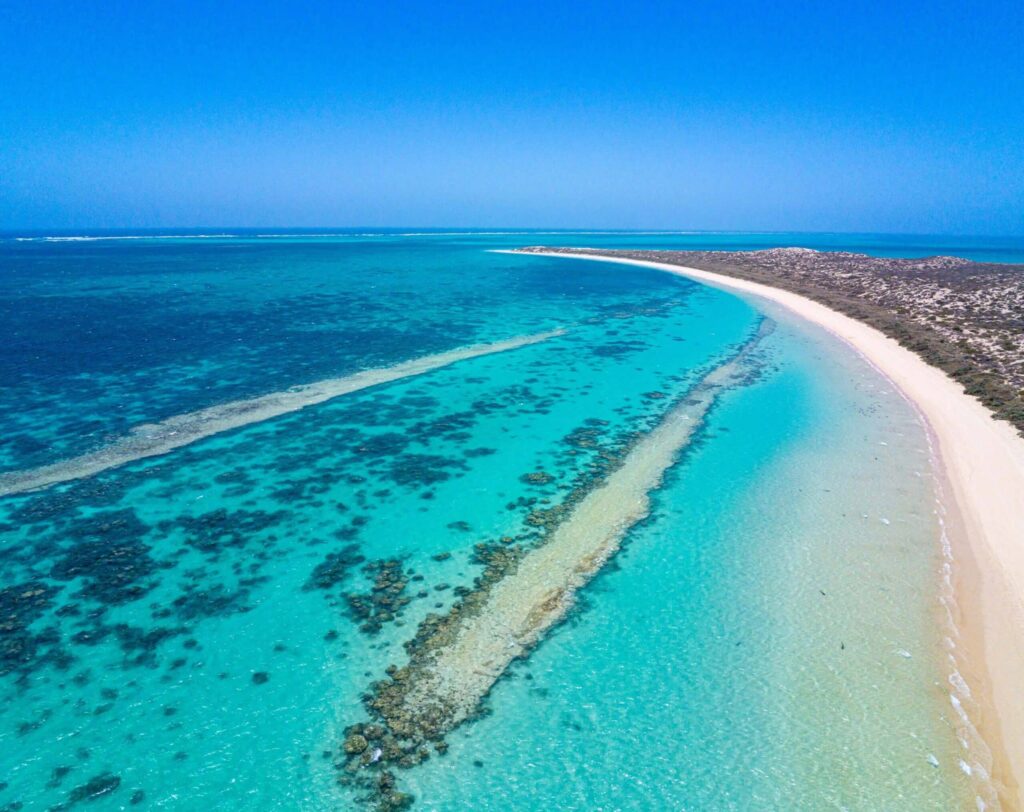
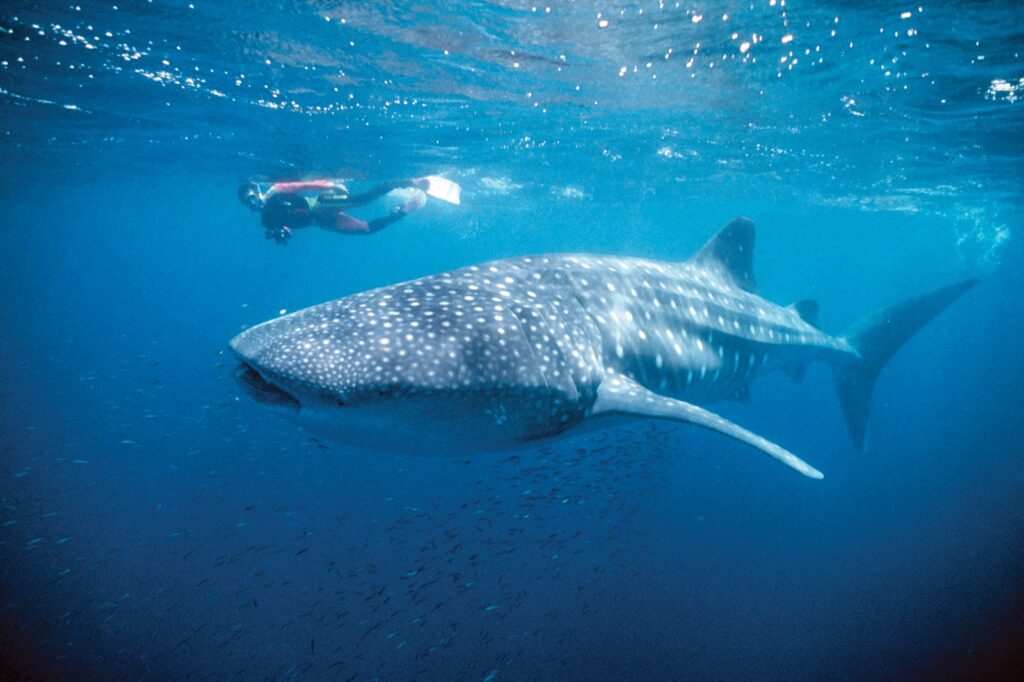
Ningaloo Reef, situated off the coast of Western Australia, is a magnificent natural wonder that provides a unique and unforgettable adventure, including the never-to-be-forgotten experience of swimming with giant whale sharks.
The reef stretches for 260km and is the world’s largest fringing reef, which can be accessed directly from the beach. The transparent waters are home to a diverse range of marine life, including turtles, tropical fish, manta rays, and humpback whales.
However, the most notable residents of Ningaloo Reef are the gentle giant whale sharks, which congregate here in large numbers during the winter months. Swimming alongside these magnificent creatures is a once-in-a-lifetime opportunity.
Moreover, the reef is a UNESCO World Heritage site and offers a variety of outdoor activities for visitors to enjoy. Whether you swim with whale sharks, encounter manta rays, observe turtles, or witness the majestic humpback whales during their migration, Ningaloo Reef promises an incredible and unforgettable experience.
Related: 21 unique things to do in Exmouth & Ningaloo Reef
Our guide featuring 31 breathtaking Australian landmarks has given you a glimpse into the country’s natural wonders, fascinating history, and cultural significance. These remarkable landmarks, many of which hold importance in Australian indigenous culture, will leave you in awe.
Along with the warm and welcoming local people, delicious cuisine, and exceptional homegrown wines, there’s every reason to create your own unforgettable Australian vacation itinerary and embark on the trip of a lifetime Down Under!
